Five great reasons why Parma is Italy's 2020 capital of culture
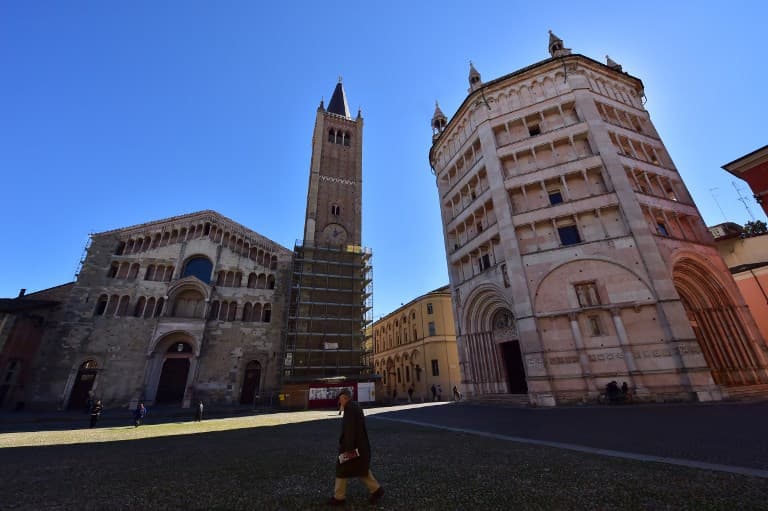
Congratulations, Parma: the northern city has been named Italy's Capital of Culture for 2020.
A jury "unanimously" picked Parma over nine other Italian cities, Culture Minister Dario Franceschini announced, beating Agrigento, Bitonto, Casale Monferrato, Macerata, Merano, Nuoro, Piacenza, Reggio Emilia and Treviso.
Parma takes over the title from Italy's 2018 Capital of Culture, Palermo, and the 2019 European Capital of Culture, Matera.
It's second time lucky for the city, which bid unsuccessfully for the 2017 honour. (It lost out to Pistoia in Tuscany.)
Here are just five of the reasons why Parma deserved it this time round.
It's food heaven
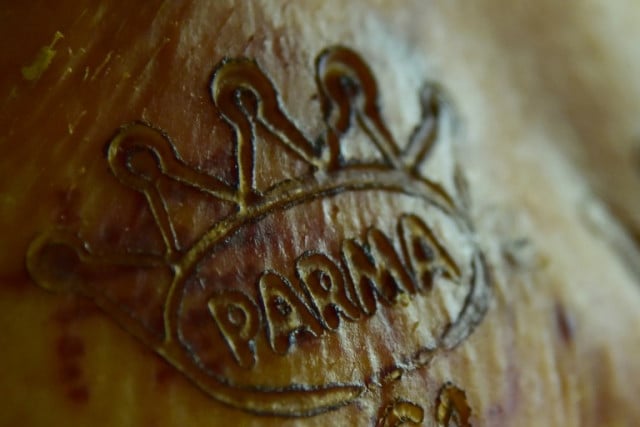
Branded Parma ham. Photo: Giuseppe Cacace/AFP
Parma ham and Parmesan cheese have made the city a household name all over the world. But they're far from its only exports: Emilia-Romagna, where Parma lies, produces more origin-protected food and drink than any other region in Italy.
In the plains around Parma you'll find some of Italy's finest artisans making some of its tastiest prosciutto, salami, cheese and porcini mushrooms – all of which can be sampled in abundance in the city itself. It's home to the top school of Italian cooking, Alma, and the only place in Italy to earn Unesco's "creative city" badge for its gastronomy.
It has opera in its soul
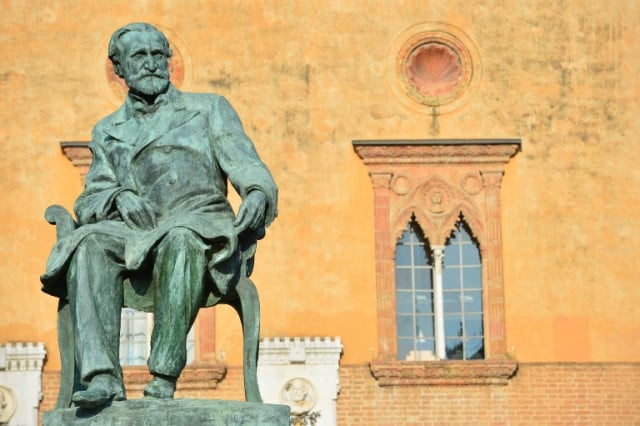 A statue of Giuseppe Verdi in Busseto, the comune near Parma where the composer lived. Photo: Giuseppe Cacace/AFP
A statue of Giuseppe Verdi in Busseto, the comune near Parma where the composer lived. Photo: Giuseppe Cacace/AFP
Parma province gave the world two of Italy's most famous musicians, composer Giuseppe Verdi and conductor Arturo Toscanini, and you'll find their legacy not only at their birthplaces (now museums) but in the concert hall, philharmonic orchestra and annual opera festival named after them.
Welcoming music from further afield, Parma's two largest venues – the 19th-century Teatro Regio and modern Auditorium Paganini – look and sound fantastic, in entirely different ways. And its House of Music museum is one of the most comprehensive resources around for anyone interested in the history of Italian opera.
There's art everywhere
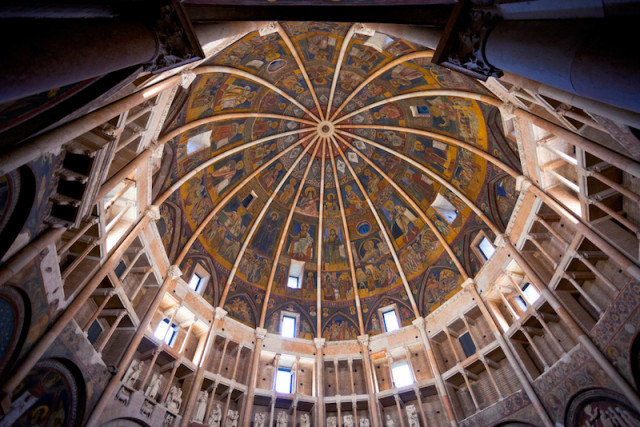
The Baptistery ceiling. Photo: vvoennyy/DepositPhotos
Really, everywhere: not only in the Galleria Nazionale, which houses work by local artists Parmigianino and Correggio alongside those of Da Vinci and Canaletto, but in its many private galleries and in the city's churches, where spectacular frescoes illuminate the walls and domes.
Not to mention the University of Parma's collection of more recent fine art, photography and fashion, as well as the Parma 360 Festival of contemporary creativity in all its forms, including music, illustration and graphic design.
Its architecture doesn't stand still
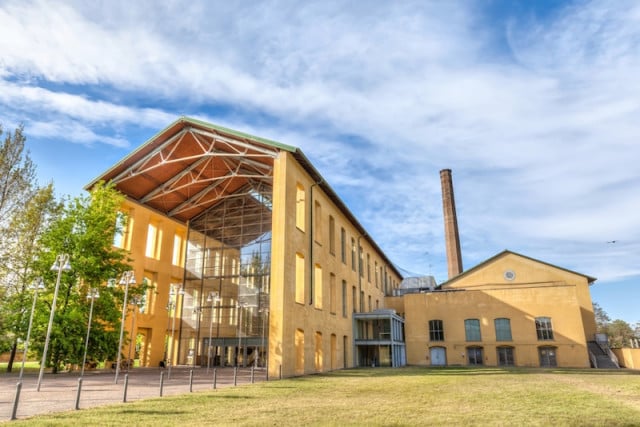
The Auditorium Paganini. Photo: bbsferrari/DepositPhotos
Central Parma boasts jewels of medieval, Renaissance and baroque architecture – the glorious cathedral, octagonal baptistery, all-wood Teatro Farnese and Palazzo della Pilotta to name but a few.
Yet it isn't afraid to mix it up: in recent years Parma has added contemporary designs to its architectural attractions, including the Barilla Centre and Auditorium Paganini, converted from an old sugar factory by Renzo Piano; the reworked Piazalle della Pace by Mario Botta; and Paolo Mancini's airy Piazza Ghiaia.
Its museums innovate
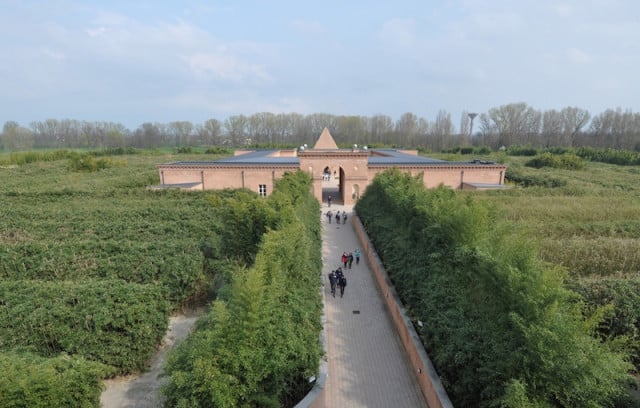
The Masone Labyrinth. Photo: scrisman/DepositPhotos
Parma's abundant museums are anything but stuffy. As well as art collections and historical artefacts, you'll also find entire displays dedicated to food, sound recording and the local football team.
Just outside Parma, and gracing the logo for its Capital of Culture bid, is the Labirinto della Masone, the world's largest maze, built by editor Franco Maria Ricci as a promise to writer Jorge Luis Borges.
What's more, as part of its candidacy Parma has pledged to further broaden its cultural attractions, commissioning installations outside the city centre and inviting artists from elsewhere in Italy and the world to give their own creative view of the city.
Comments
See Also
A jury "unanimously" picked Parma over nine other Italian cities, Culture Minister Dario Franceschini announced, beating Agrigento, Bitonto, Casale Monferrato, Macerata, Merano, Nuoro, Piacenza, Reggio Emilia and Treviso.
Parma takes over the title from Italy's 2018 Capital of Culture, Palermo, and the 2019 European Capital of Culture, Matera.
It's second time lucky for the city, which bid unsuccessfully for the 2017 honour. (It lost out to Pistoia in Tuscany.)
Here are just five of the reasons why Parma deserved it this time round.
It's food heaven

Branded Parma ham. Photo: Giuseppe Cacace/AFP
Parma ham and Parmesan cheese have made the city a household name all over the world. But they're far from its only exports: Emilia-Romagna, where Parma lies, produces more origin-protected food and drink than any other region in Italy.
In the plains around Parma you'll find some of Italy's finest artisans making some of its tastiest prosciutto, salami, cheese and porcini mushrooms – all of which can be sampled in abundance in the city itself. It's home to the top school of Italian cooking, Alma, and the only place in Italy to earn Unesco's "creative city" badge for its gastronomy.
It has opera in its soul
 A statue of Giuseppe Verdi in Busseto, the comune near Parma where the composer lived. Photo: Giuseppe Cacace/AFP
A statue of Giuseppe Verdi in Busseto, the comune near Parma where the composer lived. Photo: Giuseppe Cacace/AFP
There's art everywhere

The Baptistery ceiling. Photo: vvoennyy/DepositPhotos
Really, everywhere: not only in the Galleria Nazionale, which houses work by local artists Parmigianino and Correggio alongside those of Da Vinci and Canaletto, but in its many private galleries and in the city's churches, where spectacular frescoes illuminate the walls and domes.
Not to mention the University of Parma's collection of more recent fine art, photography and fashion, as well as the Parma 360 Festival of contemporary creativity in all its forms, including music, illustration and graphic design.
Its architecture doesn't stand still

The Auditorium Paganini. Photo: bbsferrari/DepositPhotos
Central Parma boasts jewels of medieval, Renaissance and baroque architecture – the glorious cathedral, octagonal baptistery, all-wood Teatro Farnese and Palazzo della Pilotta to name but a few.
Yet it isn't afraid to mix it up: in recent years Parma has added contemporary designs to its architectural attractions, including the Barilla Centre and Auditorium Paganini, converted from an old sugar factory by Renzo Piano; the reworked Piazalle della Pace by Mario Botta; and Paolo Mancini's airy Piazza Ghiaia.
Its museums innovate

The Masone Labyrinth. Photo: scrisman/DepositPhotos
Parma's abundant museums are anything but stuffy. As well as art collections and historical artefacts, you'll also find entire displays dedicated to food, sound recording and the local football team.
Just outside Parma, and gracing the logo for its Capital of Culture bid, is the Labirinto della Masone, the world's largest maze, built by editor Franco Maria Ricci as a promise to writer Jorge Luis Borges.
What's more, as part of its candidacy Parma has pledged to further broaden its cultural attractions, commissioning installations outside the city centre and inviting artists from elsewhere in Italy and the world to give their own creative view of the city.
Join the conversation in our comments section below. Share your own views and experience and if you have a question or suggestion for our journalists then email us at [email protected].
Please keep comments civil, constructive and on topic – and make sure to read our terms of use before getting involved.
Please log in here to leave a comment.